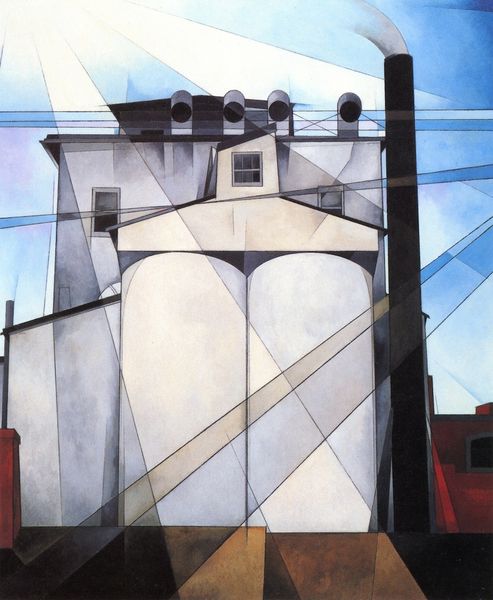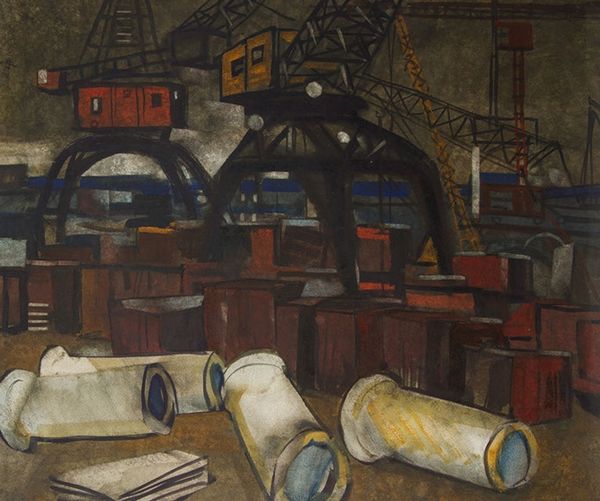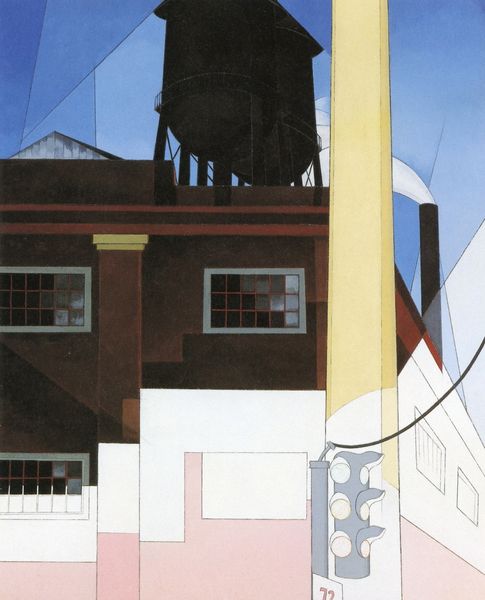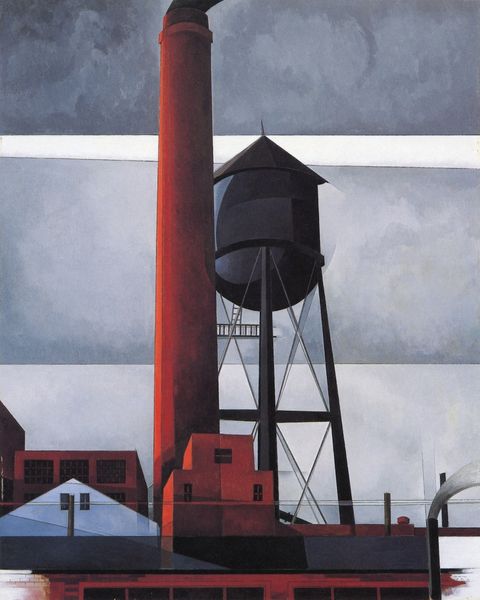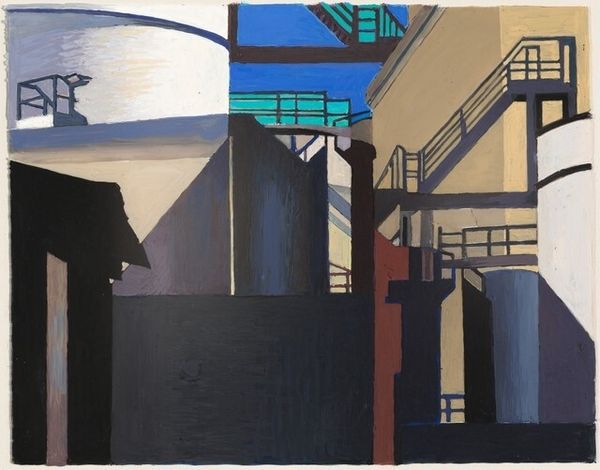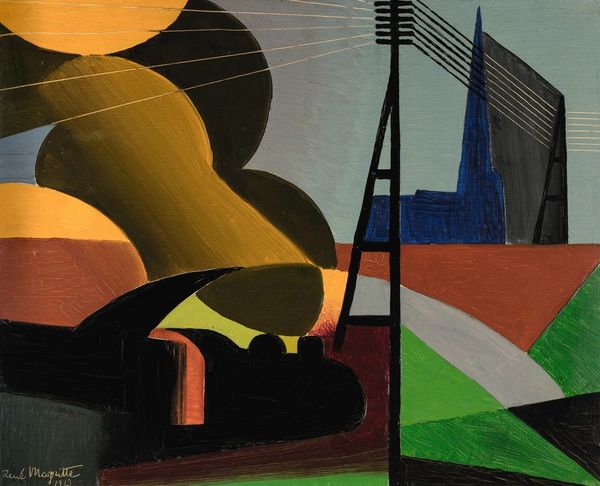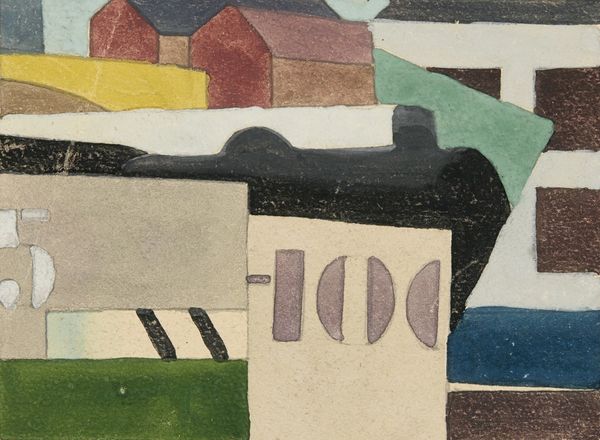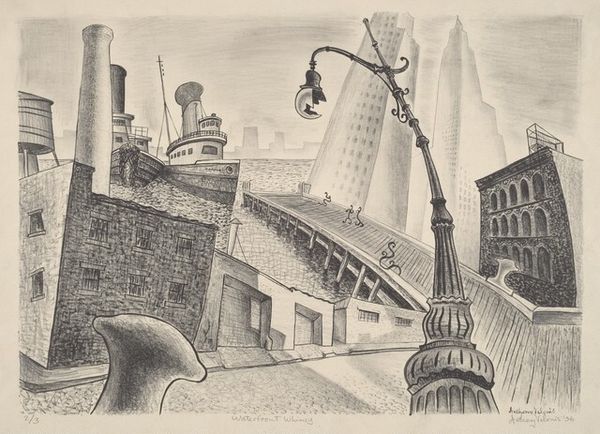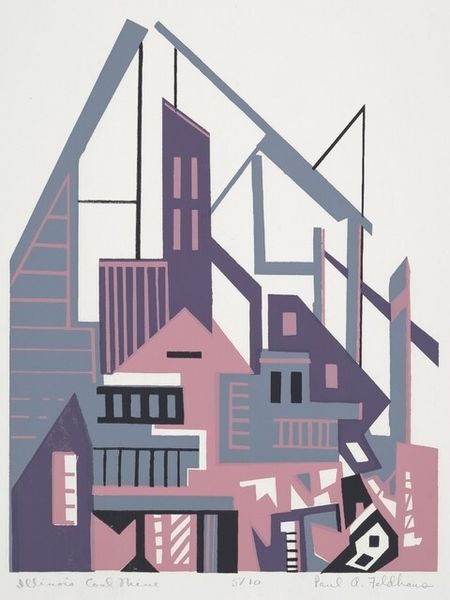
painting
#
precisionism
#
painting
#
geometric
#
cityscape
Copyright: Public domain
Editor: "After All" by Charles Demuth, painted in 1933. It looks like an industrial scene rendered with an almost mathematical precision. What do you see in this painting that I might be missing? Curator: What immediately strikes me is the architectural simplification. Notice how Demuth has reduced the industrial forms—smokestacks, buildings—to geometric components, favouring planar surfaces and sharp angles. There's an undeniable order at play, wouldn't you agree? Editor: Yes, definitely. Everything seems so deliberate, and yet… the buildings almost overlap and flatten out on each other, the colors even work in a flattened scale. It has depth, but is rendered graphically. How does the color scheme function within that structure? Curator: The restricted palette enhances the painting’s formal coherence. The tones of red and yellow are carefully modulated to produce contrast without disrupting the overall harmony. The absence of naturalistic hues pulls our attention to the arrangement of forms and the interplay of light and shadow. The subject matter serves more as a armature, in this case, for formal construction. Do you find any expressive content in its industrial imagery? Editor: That's interesting, the shapes and lines create a dynamic energy and the overall geometry transforms an industrial landscape into a dynamic scene. Curator: Indeed, consider the formal vocabulary and structure, for their own merit. Perhaps Demuth aimed to find beauty within, or superimposed it upon, the industrial landscape. Editor: I see what you mean; focusing on structure first helps us appreciate how a familiar view is transformed through geometry and form. Thanks for pointing that out.
Comments
No comments
Be the first to comment and join the conversation on the ultimate creative platform.
